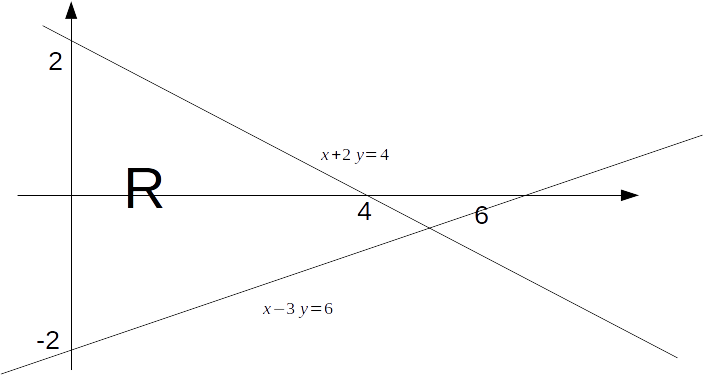\[0\leq x\leq 1, 2 \leq y\leq 3\]
. It is not so simple when one or more boundaries of the region of integration is given by an equation in the variables.Suppose we are to evaluate
\[\int_R xy dR\]
over the region \[R\]
satisfying \[x+2y \leq 4, x-3y \geq6, x \geq0\]
.

\[R\]
\[x/3 -2 \leq y\leq2-x/2\]
and \[0 \leq x\leq 24/5\]
Not that
\[\frac{24}{5}\]
is the \[x\]
intecpt of the top and bottom boundaries of \[R\]
.We can write the integral as
\[\begin{equation} \begin{aligned} \int^{24/5}_0 \int^{2-x/2}_{x/3-2} xy dy dx &= \int^{24/5}_0 [xy^2/2]^{2-x/2}_{x/3-2} dx \\ &= \int^{24/5}_0 ((x(2-x/2)^2 - x(x/3-2)^2) dx \\ &= \int^{24/5}_0 (-2x^2/3+5x^3/36) dx \\ &= [-2x^3/9 5x^4/144]^{24/5}_0 \\ &= 663/125 \end{aligned} \end{equation} \]
Notice that on the left hand boundary
\[x=0 \]
, a constant, and on the right hand boundary, \[x=24/5\]
.This is why we integrated with respect to
\[y\]
first, then \[x\]
. 